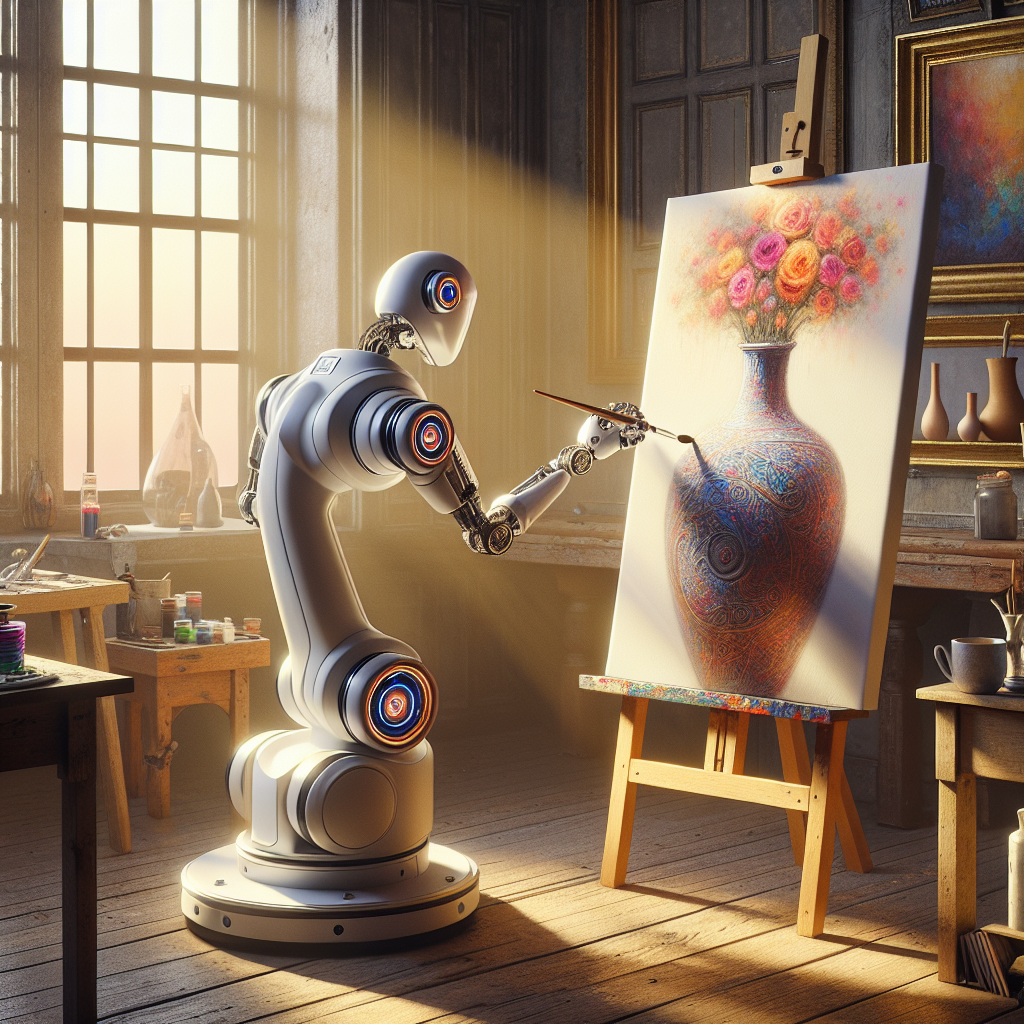AI Art: A New Frontier in Creative Expression
AI art has emerged as a transformative force, reshaping the boundaries of creativity in art and design. By harnessing the power of artificial intelligence, artists and designers now have access to unprecedented tools that amplify imagination and streamline processes. This evolution is not about replacing human creativity but augmenting it, enabling novel forms and methods that were previously unimaginable. As AI becomes increasingly integrated into creative workflows, it opens new possibilities for both professionals and hobbyists to explore unique expressions and innovate with greater freedom.
How AI is Revolutionizing Traditional Art Techniques
Artificial intelligence has injected fresh energy into traditional art forms, merging technology with classical creativity to produce groundbreaking works.
Generative Algorithms and Creative Exploration
Generative adversarial networks (GANs), a type of AI, create images, music, and designs through a process that mimics human learning. These systems analyze vast datasets to generate artworks that reflect or reinterpret styles, themes, and forms.
– Artists use AI to produce original paintings inspired by famous masters or to blend various styles into new hybrid forms.
– The technology facilitates rapid iteration, allowing creatives to experiment without the constraints of physical materials or time.
– Example: The artwork “Edmond de Belamy,” created using AI, sold at auction for $432,500, illustrating the market’s growing acceptance of AI-generated art.
Enhancing Detail and Precision
AI tools assist artists by refining detail work, such as color correction, texture generation, and composition adjustments, that might otherwise be painstaking efforts.
– Machine learning models suggest enhancements to improve visual harmony and balance.
– Adaptive brushes and filters can mimic natural media effects, enhancing digital paintings with authentic tactile qualities.
Transforming Design Processes with AI Art
Beyond art as an aesthetic endeavor, AI impacts the design industry by streamlining workflows and inspiring innovation.
AI-Driven Design Automation and Prototyping
Designers leverage AI to automate repetitive tasks such as layout adjustments, typography pairing, and color palette generation.
– AI-powered tools instantly create multiple variations of logos, product packaging, or web interfaces.
– This frees designers to focus on conceptual creativity and user experience enhancements.
– Example: Adobe Sensei integrates AI to suggest design improvements and automate routine editing tasks.
Personalization and User-Centric Design
AI art enables hyper-personalization in design, tailoring visuals and experiences to individual audience preferences.
– Machine learning analyzes user behavior to adapt website layouts, advertisements, or product designs dynamically.
– This targeted approach improves engagement and drives better business outcomes.
Collaborative Creativity: Humans and AI Working Together
The synergy between human creativity and AI intelligence fosters collaborations that push artistic boundaries.
Co-Creation and Interactive Art Platforms
Artists and AI systems can interact in real-time to generate evolving artworks, enabling new forms of expression.
– Interactive installations use sensors and AI to respond to viewer movements or emotions.
– Platforms like Runway ML allow artists to integrate AI models into their creative projects without coding expertise.
Democratization of Artistic Creation
AI lowers barriers, making art creation accessible to those without traditional skills.
– AI-powered apps transform rough sketches or textual prompts into polished images.
– This inclusivity encourages diverse perspectives and fresh ideas in art and design communities.
The Ethical Landscape and Challenges of AI Art
Alongside its benefits, AI art raises important ethical questions and challenges that stakeholders must navigate.
Authorship and Copyright Concerns
Determining ownership of AI-generated works is complex, especially when datasets include copyrighted material.
– Legal frameworks are evolving but remain ambiguous regarding AI’s role as co-creator.
– Artists and developers are encouraged to maintain transparency about AI involvement.
Bias and Representation in AI Art
Because AI learns from existing data, it can unintentionally perpetuate biases or stereotypes present in its training sets.
– Careful curation of datasets and inclusive development practices are critical to fostering diverse, fair AI art.
Future Trends in AI Art and Design
The rapid evolution of AI continues to expand creative possibilities, with emerging trends shaping the next wave of innovation.
Augmented Reality (AR) and Virtual Reality (VR) Integration
AI-generated content enhances immersive environments, allowing users to interact with dynamic, evolving artworks.
– Designers create personalized virtual galleries and experiences that adapt in real time.
AI as a Creative Mentor and Educator
Future AI tools will guide artists and designers by providing constructive feedback and technique recommendations.
– This can accelerate learning and skill development for creatives at all levels.
Actionable Steps to Embrace AI Art in Your Creative Practice
Getting started with AI art is easier than many think, thanks to accessible tools and communities.
– Explore AI art platforms like DeepArt, Artbreeder, or DALL·E for experimentation.
– Integrate AI into existing workflows using plugins for popular design software.
– Engage with online forums and courses to understand best practices and ethical considerations.
– Collaborate with AI developers or digital artists to co-create innovative projects.
AI art is not just a technological innovation but a cultural shift broadening the horizon for artistic expression and design. Whether you are an artist, designer, or creative enthusiast, embracing AI tools can unlock new potentials and transform how you create.
Discover how AI art can enhance your projects and take your creativity to the next level. For personalized guidance or collaboration opportunities, visit khmuhtadin.com and connect with experts who can help you navigate the evolving landscape of AI-driven art and design.

Leave a Reply